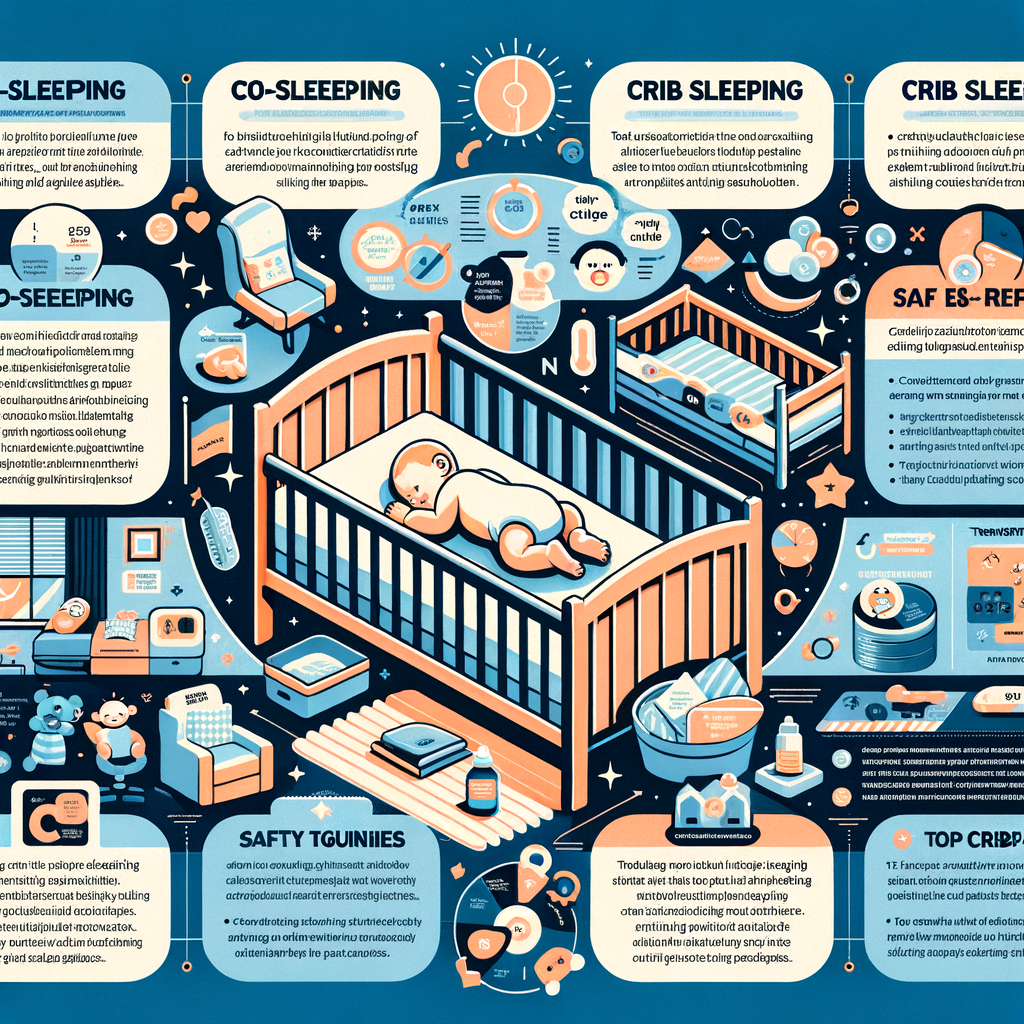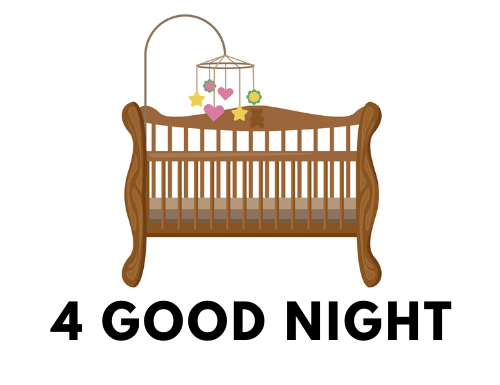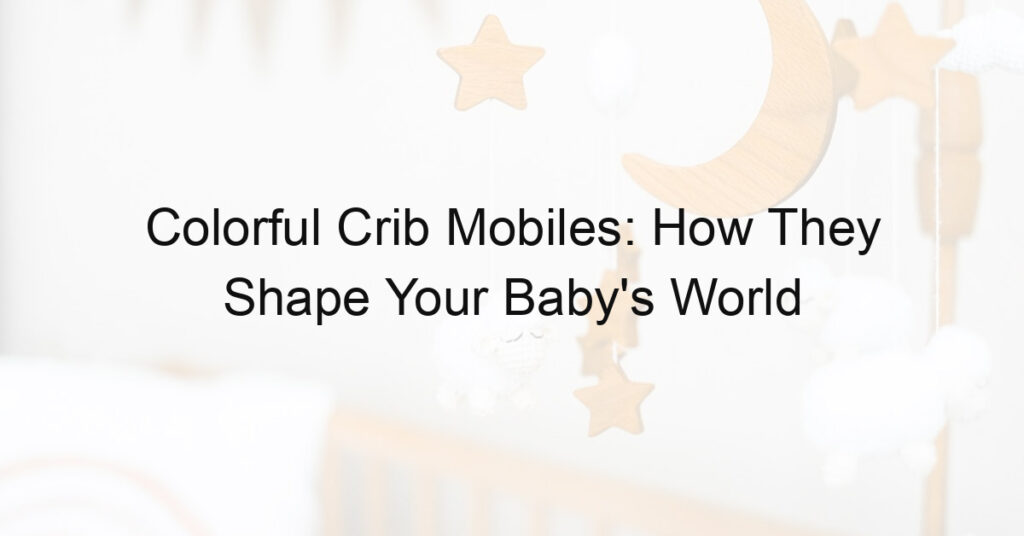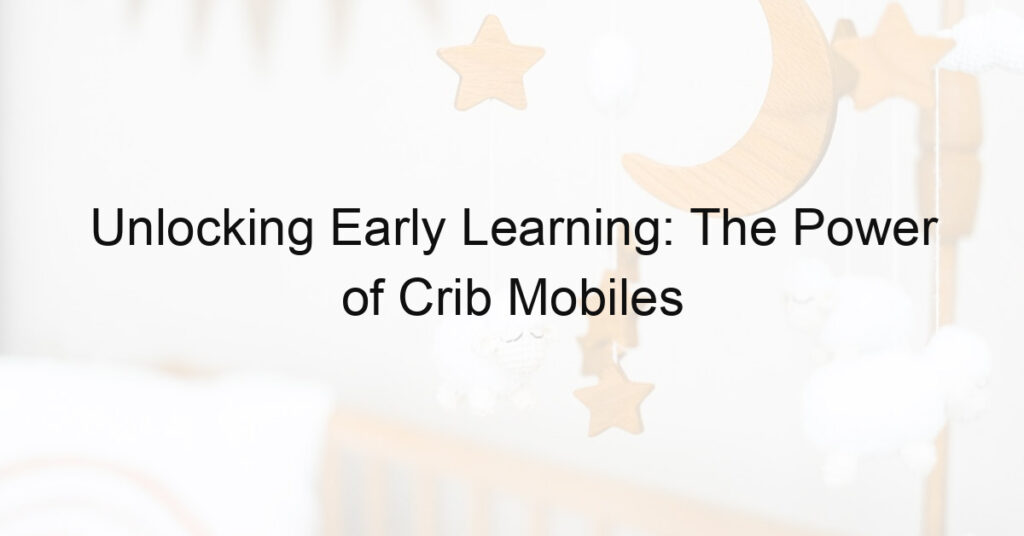
Introduction to Baby’s Sleep Choices
When it comes to your baby’s sleep, there are several choices you can make. These choices can affect not only your baby’s sleep quality but also their overall health and development. In this article, we will explore the importance of sleep for babies and the different sleep methods you can choose from, namely co-sleeping and crib sleeping.
- Understanding the Importance of Sleep for Babies
- Different Sleep Methods: Co-sleeping and Crib Sleeping
Sleep is crucial for everyone, especially for babies. During sleep, babies’ bodies work on growing and developing. According to the American Academy of Pediatrics, newborns need up to 17 hours of sleep a day, while older babies need about 12 to 16 hours, including naps. Lack of sleep can affect a baby’s mood, eating habits, and ability to learn and explore their environment. Therefore, ensuring your baby gets enough sleep is essential for their well-being.
There are two main methods parents use for their baby’s sleep: co-sleeping and crib sleeping. Co-sleeping is when parents and baby share the same bed. This method can make nighttime feedings easier and can help parents and baby bond. However, it also has potential safety risks.
Crib sleeping, on the other hand, is when the baby sleeps in a crib, either in the parents’ room or in a separate room. This method can help the baby learn to sleep independently and can be safer than co-sleeping. However, it may make nighttime feedings more challenging.
Choosing between co-sleeping and crib sleeping can be a tough decision for parents. It’s important to consider your baby’s needs, your own needs, and the safety of each method. In the following sections, we will delve deeper into each sleep method to help you make an informed decision.
Co-sleeping: An Overview
Co-sleeping, a common practice in many cultures, involves parents and infants sharing the same sleeping space. This method has been a topic of discussion for many years, with both advocates and critics voicing their opinions. Let’s delve into the benefits of co-sleeping.
Co-sleeping Benefits
While co-sleeping has its risks, it also offers several benefits that can be advantageous for both the parents and the baby. Here are some of the key benefits:
- Increased bonding time with baby: Co-sleeping allows for more skin-to-skin contact between the parent and the baby. This can lead to a stronger emotional bond. A study by the University of Notre Dame found that mothers who co-slept with their babies were more likely to interact with them during the night, leading to increased bonding.
- Easier for breastfeeding mothers: For mothers who breastfeed, co-sleeping can make nighttime feedings more convenient. Instead of having to get up and go to another room, the mother can simply feed the baby while still in bed. This can lead to more restful nights for both the mother and the baby. According to a study published in the Journal of Developmental & Behavioral Pediatrics, mothers who co-slept reported fewer disruptions to their sleep due to breastfeeding.
While these benefits are significant, it’s important to remember that co-sleeping should be done safely to protect the baby. In the next section, we will discuss the potential risks associated with co-sleeping and how to mitigate them.
Co-sleeping Risks
While co-sleeping can offer several benefits, it is essential to be aware of the potential risks involved. These risks can impact both the baby’s safety and their transition to independent sleeping. Here are two significant risks associated with co-sleeping:
- Potential for Accidental Suffocation
- Difficulty in Transitioning to Crib
One of the most serious risks associated with co-sleeping is the potential for accidental suffocation. According to the American Academy of Pediatrics, babies who co-sleep are at a higher risk of suffocation and sudden infant death syndrome (SIDS). This can occur if the baby becomes trapped between the bed and the wall, or if a parent accidentally rolls over onto the baby.
Another risk associated with co-sleeping is the potential difficulty in transitioning the baby to a crib or their own bed. Babies who are used to sleeping with their parents may find it hard to adjust to sleeping alone. This can lead to sleep disturbances and difficulties in establishing a regular sleep routine.
In conclusion, while co-sleeping can offer benefits such as increased bonding time and convenience for breastfeeding mothers, it also comes with its own set of risks. It is crucial for parents to weigh these risks against the benefits when deciding on the best sleeping arrangement for their baby.
Co-sleeping Guidelines
Co-sleeping can be a wonderful bonding experience for you and your baby. However, it’s important to follow specific guidelines to ensure a safe and comfortable sleep environment. Here are two key guidelines you should always keep in mind:
- Ensure a Safe Sleeping Environment
Creating a safe sleeping environment is the first step towards successful co-sleeping. Here are a few tips:
- Use a firm mattress: Soft mattresses can create a suffocation hazard.
- Keep the sleep area clear: Remove pillows, blankets, and toys from the baby’s sleep area to prevent accidental suffocation.
- Position your baby correctly: Always place your baby on their back to sleep, not on their stomach or side.
- Follow SIDS Prevention Guidelines
Sudden Infant Death Syndrome (SIDS) is a tragic event that can sometimes occur without warning. However, following SIDS prevention guidelines can significantly reduce the risk. Here are some key guidelines:
- Avoid smoking and second-hand smoke: Smoke can increase the risk of SIDS.
- Use a pacifier: Some studies suggest that using a pacifier during sleep can reduce the risk of SIDS.
- Share a room, but not a bed: The American Academy of Pediatrics recommends that babies sleep in the same room as their parents for the first six months, but not in the same bed.
Remember, safety should always be your top priority when co-sleeping. By following these guidelines, you can create a safe and comfortable sleeping environment for your baby.
Crib Sleeping: An Overview
When it comes to your baby’s sleep, one of the most popular options is crib sleeping. This method involves placing your baby in a crib, a specially designed bed with high sides to keep your baby safe and secure. But what are the advantages of crib sleeping? Let’s delve into it.
Crib Sleeping Advantages
Choosing to have your baby sleep in a crib comes with a number of benefits. Here are a couple of key advantages:
- Provides baby with their own space: Having their own space can be beneficial for babies. It allows them to get used to sleeping independently, which can be a crucial step in their development. This can also reduce the risk of sleep disturbances for both the baby and the parents.
- Can help establish a sleep routine: A crib can be an effective tool in establishing a sleep routine for your baby. By associating the crib with sleep, your baby can learn to understand when it’s time to sleep, helping to regulate their sleep patterns and ensure they get the rest they need.
In conclusion, crib sleeping can provide a safe and comfortable environment for your baby, while also helping to establish a consistent sleep routine. However, it’s important to remember that every baby is different, and what works for one may not work for another. Always consider your baby’s needs and comfort when deciding on their sleeping arrangements.
Best Crib for Baby
Choosing the best crib for your baby is a crucial decision. It’s not just about style or price, but also about safety and comfort. Here are some considerations and recommendations to help you make an informed choice.
-
Considerations when choosing a crib
When selecting a crib for your baby, there are several factors to consider:
- Safety: The crib should meet all safety standards. Look for a certification seal from a reputable organization like the Juvenile Products Manufacturers Association (JPMA).
- Size: The crib should be spacious enough for your baby to move around comfortably, but not so large that they can’t feel secure.
- Adjustability: As your baby grows, you’ll need to lower the mattress. A crib with an adjustable mattress height is a wise investment.
- Material: The crib should be made of non-toxic materials. Solid wood cribs are a popular choice due to their durability and safety.
-
Recommended cribs for different needs
Depending on your specific needs, here are some recommended cribs:
Crib Best for Features Graco Benton 4-in-1 Convertible Crib Long-term use Converts to toddler bed, daybed, and full-size bed; three adjustable mattress heights Babyletto Hudson 3-in-1 Convertible Crib Eco-friendly choice Made with sustainable New Zealand pine wood; non-toxic finish Delta Children Folding Portable Mini Crib Space-saving Folds flat for easy storage; includes mattress
Co-sleeping vs Crib: Safety Comparison
When it comes to your baby’s sleep, safety is the top priority. Both co-sleeping and crib sleeping have their own safety concerns. Let’s take a closer look at each of these methods.
- Examining safety concerns for both methods
Co-sleeping, or sharing a bed with your baby, can provide comfort and ease for both parent and child. However, it also presents certain risks. According to the American Academy of Pediatrics, co-sleeping can increase the risk of Sudden Infant Death Syndrome (SIDS) and other sleep-related infant deaths. This is especially true if parents are heavy sleepers, smoke, or consume alcohol or drugs.
On the other hand, crib sleeping, where the baby sleeps in a separate crib in the same room as the parents, is generally considered safer. Cribs are designed with safety standards in mind, reducing the risk of suffocation and entrapment. However, it’s important to ensure that the crib is free of loose bedding, soft toys, and other potential hazards.
- Co-sleeping vs crib sleep studies
Several studies have been conducted to compare the safety of co-sleeping and crib sleeping. A study published in the Journal of Pediatrics found that babies who co-sleep are five times more likely to die of SIDS compared to those who sleep in a crib. However, it’s important to note that this risk is significantly reduced when parents follow safe co-sleeping guidelines, such as using a firm mattress, keeping the bed free of pillows and blankets, and never co-sleeping on a sofa or armchair.
Another study published in the Journal of Sleep Research found that crib sleeping can lead to better sleep quality for both babies and parents. Babies who sleep in a crib tend to have longer, uninterrupted sleep periods, while parents report less sleep disturbance.
In conclusion, both co-sleeping and crib sleeping have their pros and cons. It’s essential for parents to be aware of the safety concerns associated with each method and make an informed decision based on their unique circumstances and the needs of their baby.
Making the Right Choice for Baby Sleep
Choosing the right sleep method for your baby is a crucial decision that can impact both your baby’s health and your peace of mind. This section will guide you through the factors to consider when making this choice and how to personalize your decision based on your baby’s unique needs.
- Factors to Consider When Choosing a Sleep Method
There are several factors to consider when deciding on the best sleep method for your baby. These include:
- Safety: The safety of your baby is paramount. Both co-sleeping and crib sleeping have their pros and cons. It’s essential to research and understand these before making a decision.
- Comfort: Your baby’s comfort is another critical factor. Some babies sleep better when close to their parents, while others prefer their own space.
- Convenience: Consider your lifestyle and convenience. Co-sleeping might be more convenient for breastfeeding moms, while a crib can provide a dedicated space for the baby.
- Space: The amount of space in your home can also influence your decision. Cribs require more room than co-sleeping arrangements.
- Personalizing Your Decision Based on Your Baby’s Needs
Every baby is unique, and what works for one might not work for another. Here’s how you can personalize your decision:
- Observe your baby: Pay attention to your baby’s sleep patterns and preferences. This can give you clues about what might work best for them.
- Experiment: Don’t be afraid to try different methods. If one method doesn’t seem to be working, it’s okay to try another.
- Be flexible: Your baby’s needs might change as they grow. Be prepared to adapt your sleep arrangements accordingly.
Remember, the goal is to ensure your baby gets the best possible sleep. With careful consideration and a willingness to adapt, you can find the sleep method that works best for your family.
Transitioning from Co-sleeping to Crib
Transitioning your baby from co-sleeping to crib sleeping can be a significant change for both you and your little one. It’s a process that requires patience, consistency, and understanding. Let’s delve into when and how to make this transition, as well as the challenges you might face and solutions to overcome them.
- When and how to make the transition
- Challenges and solutions during the transition
Typically, the transition from co-sleeping to crib sleeping begins between 6 months to a year. However, every child is unique, and it’s essential to watch for signs that your baby is ready. These signs might include sleeping for longer stretches at night or showing an interest in their own space.
When you decide it’s time to make the transition, start by introducing the crib during nap times. This allows your baby to get used to the new environment without the pressure of a full night’s sleep. Gradually increase the time your baby spends in the crib until they are comfortable sleeping there for the whole night.
Transitioning from co-sleeping to crib sleeping is not without its challenges. Your baby may resist the change, leading to increased night waking or difficulty settling down. However, there are solutions to these challenges.
If your baby is having trouble adjusting, try spending more time in their room during the day, playing and interacting with them. This can help them associate their room with positive experiences. You can also establish a consistent bedtime routine to signal to your baby that it’s time to sleep. This routine could include a bath, a story, and a lullaby.
Remember, patience is key during this transition. It’s a big change for your baby, and it might take time for them to adjust. But with consistency and understanding, your baby will eventually feel comfortable and secure in their crib.
In conclusion, transitioning from co-sleeping to crib sleeping is a significant step in your baby’s development. It’s a process that requires patience and understanding, but with the right approach, it can be a smooth and positive experience for both you and your baby.
Conclusion: Navigating Your Baby’s Sleep Choices
As we wrap up this comprehensive guide, let’s take a moment to revisit the key points we’ve covered about co-sleeping and crib sleeping. The decision between these two options is a personal one, and it’s important to make an informed choice that suits your family’s needs and lifestyle.
- Recap of co-sleeping and crib sleeping
- Final thoughts on making the best choice for your baby
Co-sleeping, which involves sharing a bed with your baby, can foster a close bond and make night-time feeding easier. However, it also comes with potential risks, such as the possibility of accidental suffocation. On the other hand, crib sleeping is generally considered safer and can help your baby develop independent sleep habits. But it may also mean more night-time wake-ups for you, especially in the early months.
Ultimately, the best choice for your baby’s sleep is one that ensures their safety and supports their development, while also allowing you to get the rest you need. Whether you choose co-sleeping or crib sleeping, remember that every baby is unique, and what works for one family may not work for another. It’s all about finding a balance that works for you and your little one.
In conclusion, navigating your baby’s sleep choices can be a challenging journey, but with the right information and a little patience, you can make the best decision for your family. Remember, there’s no ‘one size fits all’ solution when it comes to your baby’s sleep. It’s a process of trial and error, and what matters most is that your baby is safe, comfortable, and loved.














